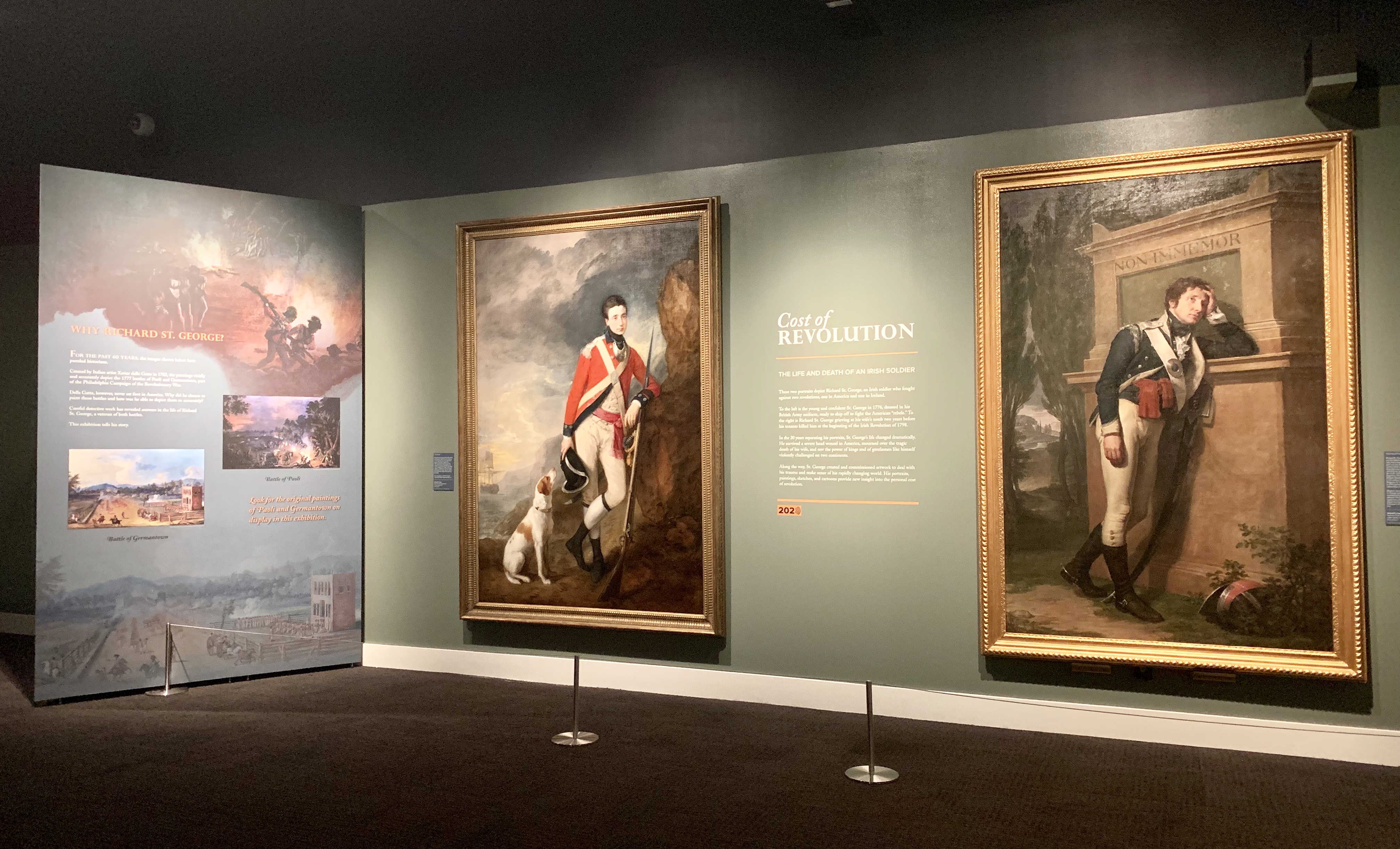During a multi-day visit to Philadelphia, where most of the focus fell on the modern era politics of Brexit and the interest of the Irish diaspora, Ambassador Daniel Mulhall’s presence at the Museum of the American Revolution’s launch of their new exhibit “Cost of Revolution: The Life and Death of an Irish Soldier” was an opportunity to talk history.
Ambassador Mulhall, along with Dr. Martin Mansergh, historian and former Irish political advisor who helped negotiate the Good Friday Agreement, gave context and insight into the influence of the American Revolution on Ireland’s own path to independence. In addition, Dr. Mansergh is a descendant of Richard St. George Mansergh-St. George (from here on referred to as Richard St. George, as he is in the Museum’s exhibit) who is the subject of the “Cost of Revolution” exhibition, providing a personal connection to the historical narrative.
The evening’s events were planned by an Honorary Event Committee including Honorary Chair, Governor Edward G. Rendell; State Representative Mike Driscoll; Charles E. Hopkins; Marita Krivda Poxon; Kevin Kent, Esquire; Honorable James Murray Lynn; Joseph S. Martz; Edward D. McBride and Kathleen M. Sullivan. The crowd was welcomed in by bagpipers William Watson, Frank Watson, Tom Conner and Lee Nolan, and then treated to traditional Irish music throughout the evening performed by musicians including Paddy O’Neill, John McGillian and Darin Kelly.
But the real centerpiece is the exhibit itself. Running through March 17, 2020, it’s worth a special trip to wander through the gallery for a look at a side of the American Revolution not usually seen. While Richard St. George is the focal point, the artifacts and art on display have been gathered from around the world by the Museum’s dedicated curators. Included in the over 100 pieces brought together from England, Ireland, Australia and the United States are “weaponry, insignia, portraits and manuscripts.”
St. George was a member of the British ruling class, the Anglo-Irish Gentry, and in both the American Revolution and the Irish Rebellion of 1798 he was on the side not fought by the rebels. As a redcoat in America he was shot in the head at the Battle of Brandywine, right here in our backyard. He survived, with lasting physical effects, only to meet his end back in Ireland when he was ambushed and killed by his own tenants in the 1798 uprising.
For more information on this exhibit, check out the Museum’s website here.
Here’s a video of one of the highlights of the evening, Ambassador Mulhall discussing his enjoyment of his job, and Irish America:

